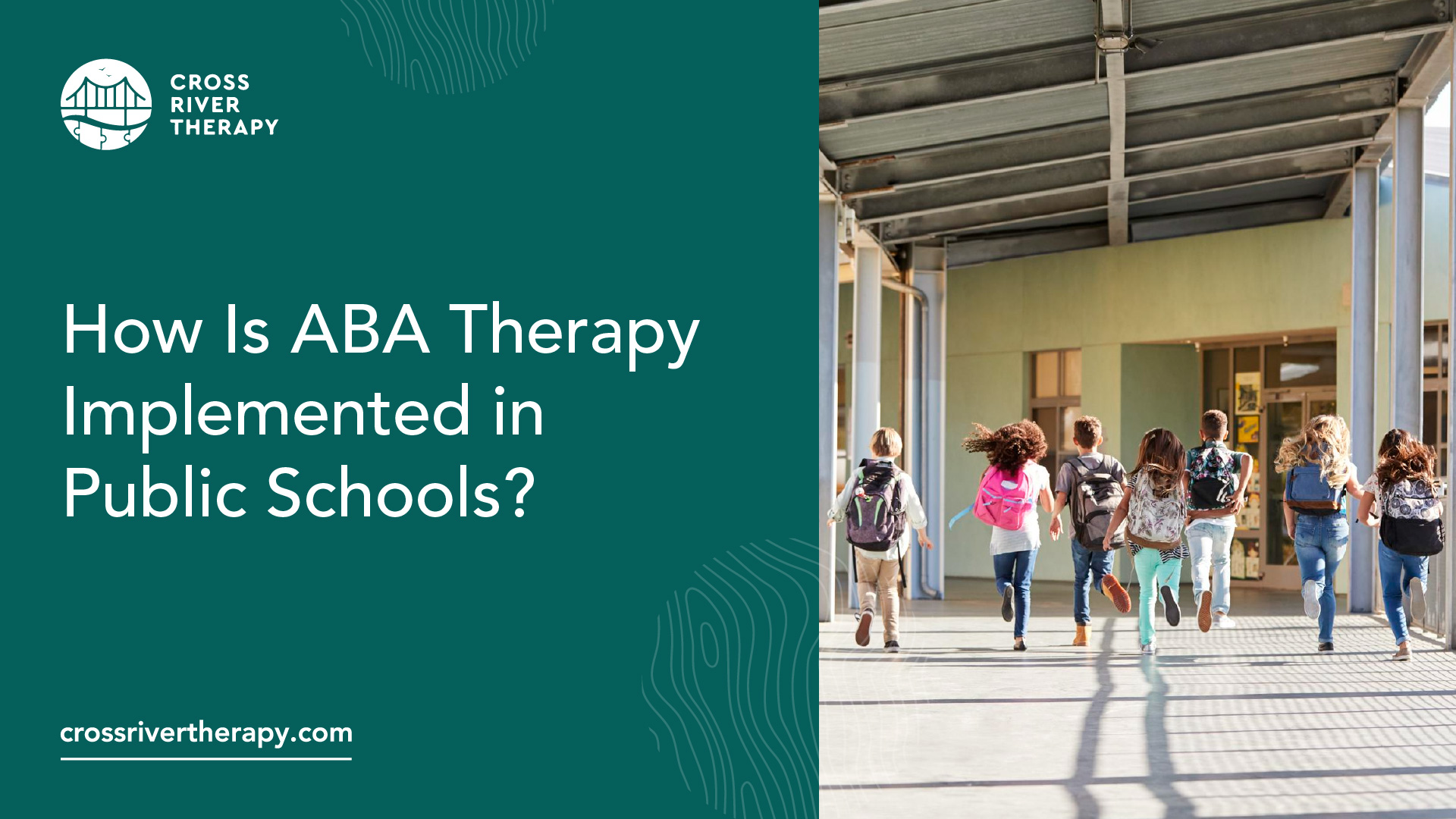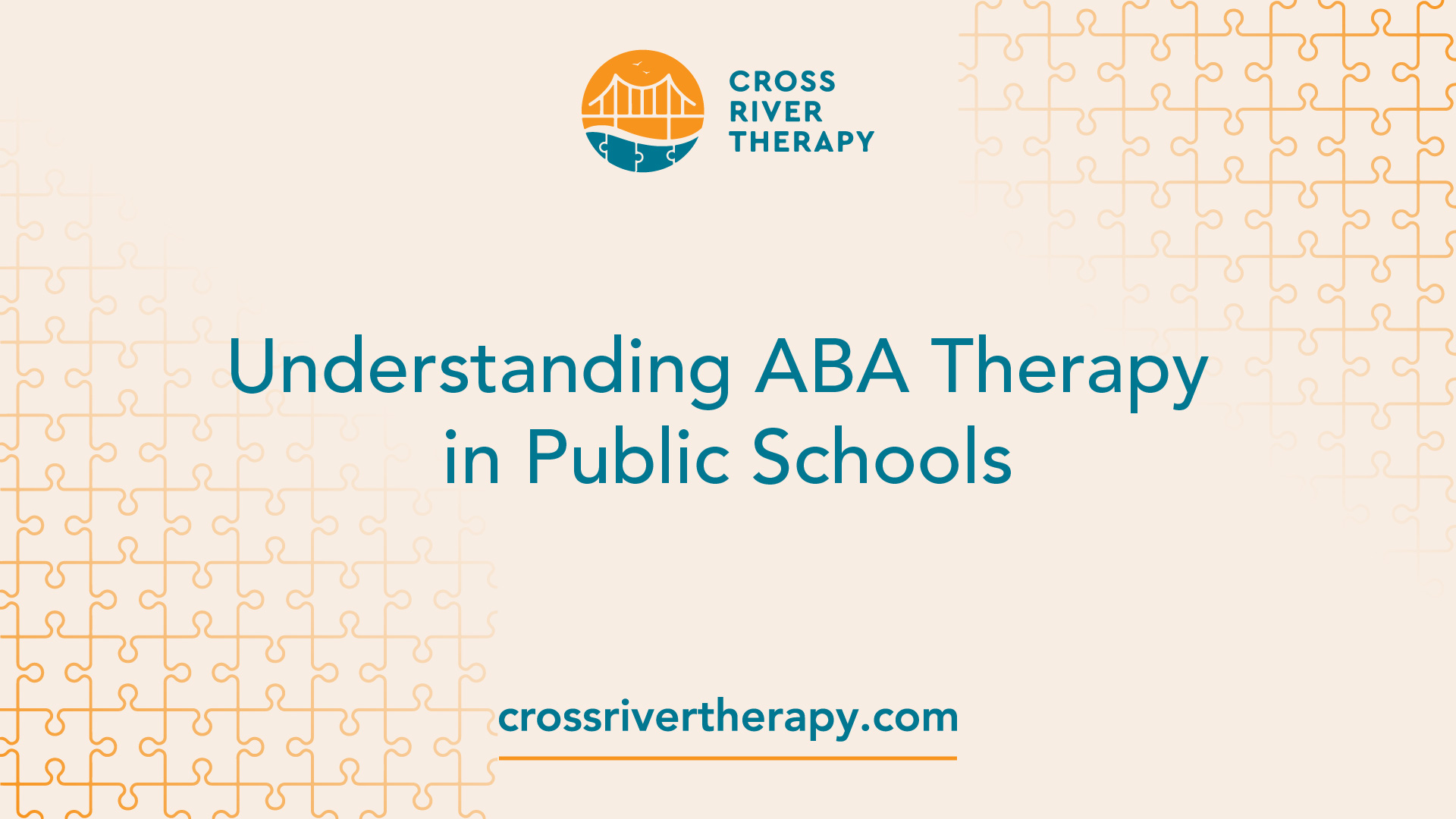How Is ABA Therapy Implemented in Public Schools?
Discover how ABA therapy transforms public schools for children with autism.

Understanding ABA Therapy in Public Schools

ABA therapy, or Applied Behavior Analysis therapy, is a highly effective treatment used to modify behaviors and teach skills for individuals with autism and other neurodevelopmental needs. In recent years, schools have increasingly offered ABA therapy to support children in their educational journey [1].
Benefits of ABA Therapy
One of the key benefits of ABA therapy is its ability to produce significant gains in development and reduce the need for special services when implemented intensively. Research has shown that ABA is the only scientifically validated treatment proven to be effective in teaching individuals with Autism Spectrum Disorder (ASD). By providing ABA therapy in public schools, children with autism can receive consistent and evidence-based interventions to support their learning and development.
Furthermore, ABA therapy can target specific areas of concern, such as impulse control, language development, emotional regulation, tantrums and meltdowns, peer interaction, routine building, and more. By addressing these areas through ABA therapy, children can experience improvements in their overall functioning and quality of life.
Importance of Proper Training
Proper training is crucial for the successful implementation of ABA therapy in public schools. ABA therapists play an essential role in school settings by conducting ABA-based assessments, creating individualized goals and interventions, working with students one-on-one or in small groups, implementing behavior intervention plans (BIPs), and recording data on goals and behaviors to monitor progress.
To ensure the highest quality of care, ABA therapists should undergo comprehensive and ongoing training. Training programs that provide intense and consistent training, along with feedback, can greatly improve the skills of ABA therapists. By observing successful program implementation by others, therapists can gain valuable insights and refine their techniques.
By emphasizing proper training and continuous professional development for ABA therapists in schools, the implementation of ABA therapy can be optimized to meet the unique needs of each student. This ensures that students with autism receive the best possible support and intervention to help them succeed in their educational journey.
Implementation of ABA Therapy
Implementing ABA therapy in public schools is essential for providing support and interventions to children diagnosed with autism spectrum disorder (ASD). This section will discuss the recommended hours for progress and the role of ABA therapists in schools.
Recommended Hours for Progress
ABA therapy is a highly individualized approach, and the number of recommended hours for progress can vary depending on the child's needs and goals. According to Autism Spectrum News, it is generally recommended that an individual receives between 25 and 40 hours of ABA therapy per week to make significant gains in development.
The University of California at Los Angeles (UCLA) Young Autism Project model, for example, administered ABA intervention to children diagnosed with ASD for 40 hours per week over 2-3 years. The results showed that 47% of the children reached normal intellectual and educational functioning compared to only 2% of a control group [4]. However, it's important to note that the number of hours required may vary based on the intensity of the intervention and the specific needs of the child.
Role of ABA Therapists in Schools
ABA therapists play a crucial role in the implementation of ABA therapy within the school setting. These therapists are trained professionals who specialize in applying behavior analysis principles to support individuals with ASD.
In schools, ABA therapists work closely with teachers, parents, and other professionals to develop and implement individualized treatment plans for students with ASD. They conduct assessments, collect data, and analyze the behaviors of students to create effective interventions. ABA therapists also provide training and support to teachers and paraprofessionals to ensure consistency in implementing behavioral strategies across various settings.
It's important to note that caseload recommendations for ABA therapists in schools exist to ensure the quality and effectiveness of the therapy. The Behavior Analysis Certification Board (BACB) has outlined caseload recommendations for healthcare funders and managers. According to Autism Spectrum News, the recommended caseload size for one BCBA working with students receiving 10-25 hours per week of ABA therapy services is 10-15 students. For students receiving 30-40 hours per week of ABA therapy, the recommended caseload is 6-12 students.
By adhering to these caseload recommendations, ABA therapists can provide the necessary attention and support to each student, ensuring that they receive the individualized interventions required for their progress.
The implementation of ABA therapy in public schools is a collaborative effort involving educators, ABA therapists, and parents. By working together, they can create a supportive environment that promotes the development and growth of children with ASD.
Challenges and Solutions
Implementing ABA therapy in public schools comes with its own set of challenges. However, it is important to address these challenges to ensure the effective implementation of ABA principles for students with autism. Two key challenges that arise in this context are the lack of ABA integration in education and caseload recommendations.
Lack of ABA Integration in Education
One of the main challenges faced in public schools is the lack of integration of ABA principles in special education teacher training programs. Currently, there are no requirements for special education teachers to be knowledgeable about ABA in order to teach students with autism. This can hinder the effective implementation of ABA techniques and strategies in the classroom.
To address this challenge, it is crucial to advocate for the inclusion of ABA principles in special education teacher training programs. By providing teachers with the necessary knowledge and skills, they can better support students with autism and implement ABA strategies effectively. Additionally, ongoing professional development and training opportunities can help teachers stay updated on the latest research and best practices in ABA therapy.
Caseload Recommendations
Another challenge in implementing ABA therapy in public schools is determining the appropriate caseload for ABA therapists. The Behavior Analysis Certification Board (BACB) has outlined caseload recommendations for healthcare funders and managers. According to their recommendations, the caseload size for one Board Certified Behavior Analyst (BCBA) working with students receiving 10-25 hours per week of ABA therapy services should be 10-15 students. For students receiving 30-40 hours per week of ABA therapy, the recommended caseload size should be 6-12 students.
It is important to adhere to these caseload recommendations to ensure that each student receives the necessary attention and support from their ABA therapist. By maintaining appropriate caseload sizes, therapists can dedicate sufficient time and resources to each student, enabling more effective implementation of ABA strategies.
To address caseload challenges, it may be necessary to hire additional ABA therapists or provide support staff to assist with implementing ABA programs in schools. This can help distribute the workload and ensure that students receive the individualized attention they require.
By acknowledging and addressing these challenges, schools can work towards overcoming barriers to the effective implementation of ABA therapy. Through proper integration of ABA principles in education and adherence to caseload recommendations, students with autism can receive the support they need to thrive in the school environment.
Effective ABA Strategies
When implementing ABA therapy in public schools, there are several effective strategies that can be utilized to support the learning and development of students with autism. Two commonly used strategies are Discrete Trial Teaching (DTT) and Token Economies.
Discrete Trial Teaching (DTT)
Discrete Trial Teaching (DTT) is a well-established teaching strategy in ABA therapy that is widely used to teach a variety of skills across different populations and settings. DTT focuses on breaking down skills into small, manageable components and systematically teaching them through repeated trials.
In DTT, each trial consists of three components: the antecedent (stimulus or instruction), the student's response, and the consequence (reinforcement or feedback). This structured approach allows for targeted teaching and reinforcement of specific skills such as academic, cognitive, communication, social, attending, imitation, and behavioral skills.
By breaking down skills into smaller steps and providing clear and consistent prompts and reinforcement, DTT enables students to learn at their own pace and build a solid foundation for further learning. It promotes skill acquisition, generalization, and maintenance of learned skills.
Token Economies
Token economies are another effective teaching strategy used in ABA therapy to promote behavior change and skill development [1]. This strategy involves the use of tokens or points to reinforce positive behaviors and reduce behaviors that may interfere with a student's ability to learn.
In a token economy, students receive tokens or points for demonstrating desired behaviors or completing specific tasks. These tokens can later be exchanged for a variety of reinforcers or privileges. By using a token economy, students are motivated to engage in positive behaviors, as they can see the immediate rewards and work towards earning more tokens.
Token economies are particularly effective for improving functional behaviors and reducing behaviors that may impede a student's learning progress. They can be tailored to individual students' needs and can target a wide range of behaviors, such as following instructions, completing assignments, staying on task, or demonstrating appropriate social interactions.
By implementing DTT and token economies, schools can provide effective support to students with autism, helping them acquire new skills, improve behavior, and promote overall growth and development. These strategies, along with other evidence-based practices, contribute to creating an inclusive and supportive educational environment for students with autism.
Ethical Considerations
When implementing ABA therapy in public schools, there are important ethical considerations to keep in mind. These considerations revolve around advocating for evidence-based practices and ensuring fidelity in ABA implementation.
Advocating for Evidence-Based Practices
BCBAs (Board Certified Behavior Analysts) have an ethical responsibility to provide effective treatment and advocate for scientifically supported, evidence-based treatment procedures. It is crucial to prioritize interventions that have been proven to be effective through research and empirical evidence. By advocating for evidence-based practices, professionals and parents can ensure that students receive the most effective and beneficial interventions [2].
Research has shown that Applied Behavior Analysis (ABA) is an evidence-based practice for interventions with students. However, despite this, many school systems do not fully implement ABA as described in the literature, leading to a loss of fidelity and integrity in implementation and potentially resulting in ineffective interventions in the classroom.
Ensuring Fidelity in ABA Implementation
Fidelity in ABA implementation refers to the degree to which interventions are carried out as intended. It is essential to ensure that ABA therapy is implemented with high fidelity to maximize its effectiveness. ABA therapists play an essential role in school settings by conducting ABA-based assessments, creating individualized goals and interventions, working with students one-on-one or in small groups, implementing behavior intervention plans (BIPs), and recording data on goals and behaviors to monitor progress.
Despite extensive training, special education professionals may struggle to achieve a high level of procedural fidelity in implementing ABA procedures. It has been reported that sustained use of evidence-based practices is more likely when empirical procedures are taught during graduate education programs. This highlights the importance of ongoing training and professional development to ensure adherence to best practices.
To address this, it is crucial to provide ongoing support, supervision, and mentoring to professionals implementing ABA therapy in schools. Regular feedback and opportunities for skill development can help professionals maintain fidelity to ABA procedures and ensure that interventions are delivered consistently and effectively.
By advocating for evidence-based practices and ensuring fidelity in ABA implementation, schools can provide students with autism spectrum disorder.
Future of ABA in Schools

As we look ahead, the future of ABA therapy in schools holds great potential for supporting the learning and development of students with diverse needs. Efforts are being made to increase accessibility to ABA services and provide the necessary training and certification for ABA therapists, ensuring consistent and high-quality implementation of ABA strategies.
Increasing Access to ABA Services
Currently, nearly 2% of all children are diagnosed with autism, totaling more than half a million autistic children currently enrolled in school. This highlights the significant need for ABA therapy services in educational settings. To address this need, schools are working to increase access to ABA services for students.
By collaborating with local agencies and organizations, schools can establish partnerships to provide ABA therapy within the school setting. This helps to ensure that students receive the necessary support and interventions tailored to their individual needs. Additionally, efforts are being made to enhance funding and insurance coverage for ABA therapy, making it more accessible to families and schools alike.
Training and Certification for Therapists
One challenge facing the implementation of ABA therapy in schools is the shortage of qualified professionals trained to develop and oversee ABA programs. Currently, there are approximately 30,000 Board-Certified Behavior Analysts (BCBAs) in the U.S., which is only about half the number required to meet current needs [8].
To address this shortage, efforts are being made to provide training and certification opportunities for individuals interested in becoming ABA therapists. Schools and educational institutions are partnering with training programs and organizations to offer courses and certification programs in applied behavior analysis. These programs equip individuals with the necessary knowledge and skills to effectively implement ABA strategies in school settings.
Additionally, ongoing professional development and supervision are crucial to ensuring the continued growth and competence of ABA therapists. Schools are implementing mentorship programs and providing opportunities for therapists to engage in regular supervision and collaboration with experienced professionals in the field.
By increasing access to ABA services and investing in the training and certification of therapists, schools can pave the way for a future where ABA therapy is readily available to students who can benefit from it. This commitment to quality and accessibility will contribute to the overall success and well-being of students with autism and other developmental needs in the school environment.
As we move forward, it is important to continue advocating for evidence-based practices in ABA therapy and to ensure fidelity in the implementation of ABA strategies. By staying informed about the latest research and best practices, schools can provide the most effective interventions and support for students with autism and other developmental challenges.
References
[1]: https://www.sunbeltstaffing.com/blog/using-aba-therapy-in-school-settings/
[2]: https://autismspectrumnews.org/
[3]: https://www.iloveaba.com/2013/10/aba-staff-training.html



